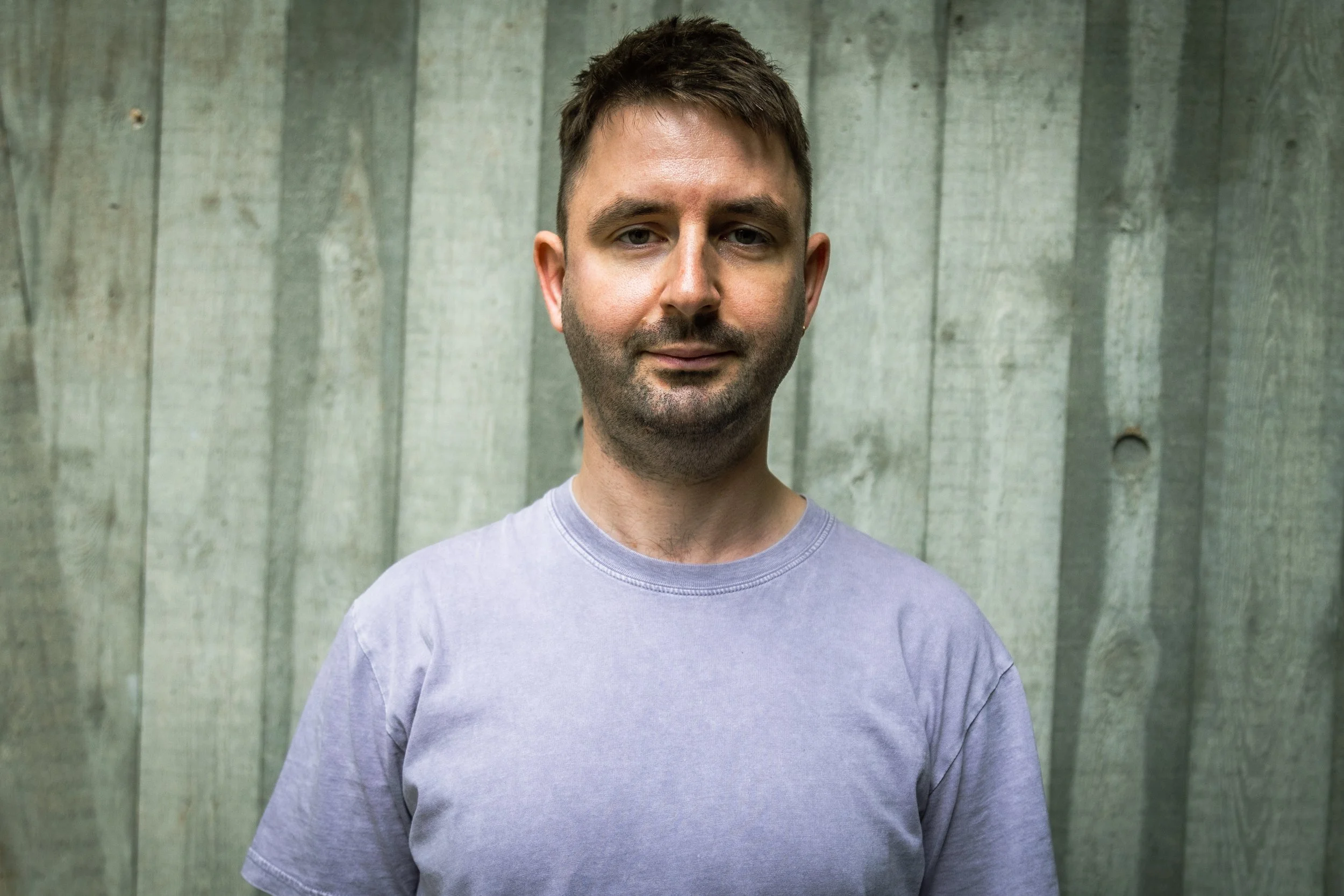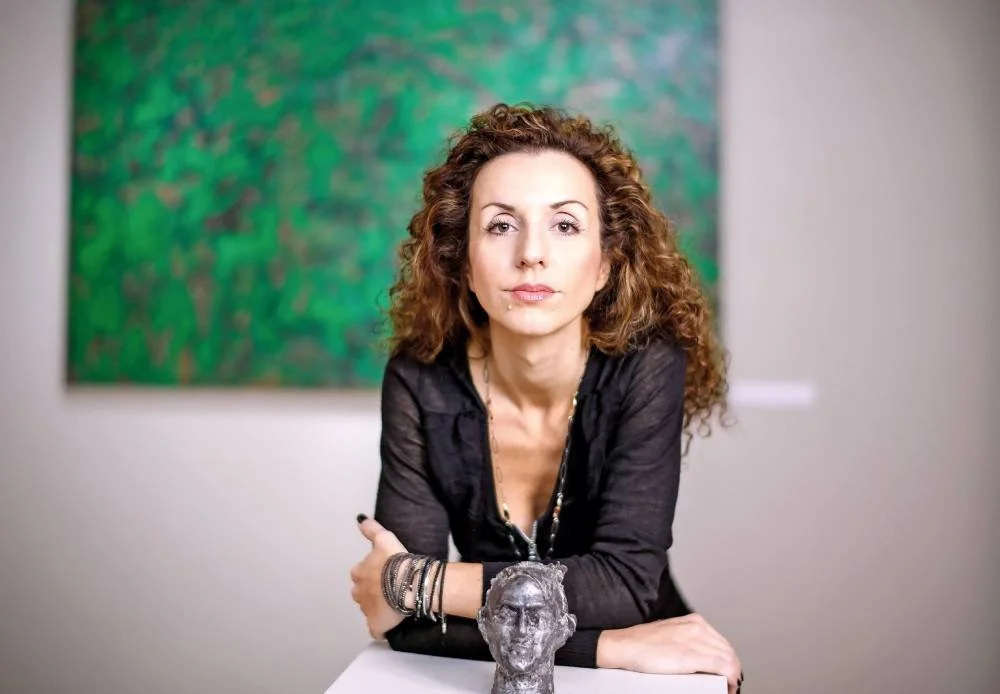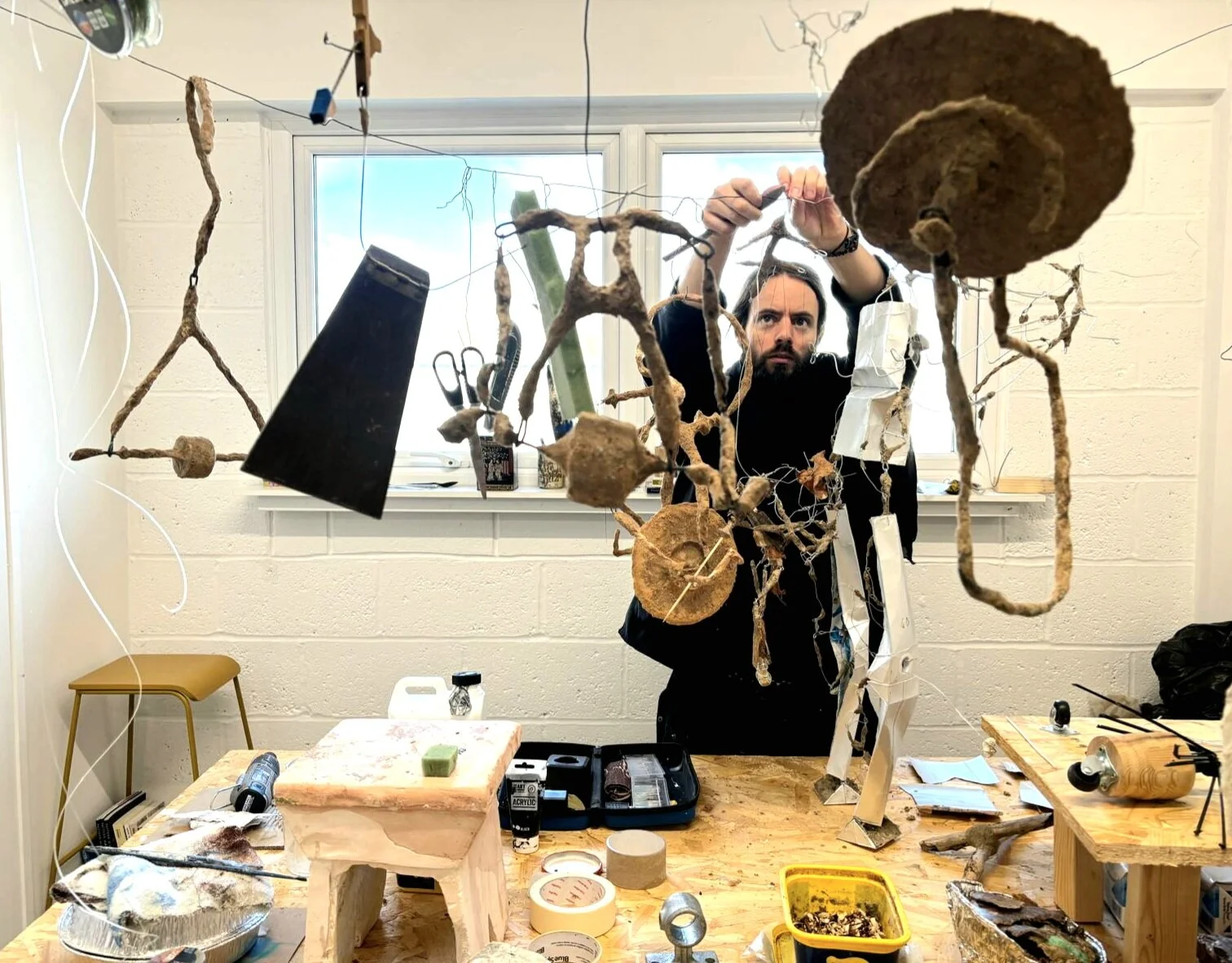In conversation with Revolv Collective
“…for us, to curate is to make a proposal to the audience, to facilitate encounters.”
- Revolv Collective
Revolv emerged in 2017 as Krasimira Butseva completed an MA in Photography at the University of Portsmouth, coinciding with Lina Ivanova's recent graduation from the same institution. United by their Bulgarian backgrounds and a mutual passion for photography, education, and aiding others, the duo found common ground. As young artists and non-natives in the UK, Krasimira and Lina encountered a dearth of guidance and support post-arts degree. In response to this void, Revolv Collective was established, organically evolving into a hub for dialogue, cooperation, and the exchange of networks and knowledge—both practical and theoretical. Over the years this exchange has grown into a community through the many initiatives of the collective, such as exhibitions, publications, workshops and mentorship.
All current members of Revolv—Lina Ivanova, Laura Bivolaru, Alexander Mourant, Victoria Doyle, and Lucas Gabellini-Fava—share a common aspiration for ongoing professional growth and assisting emerging artists with the expertise they've amassed. With backgrounds in photography, some holding BA and others MA degrees from UK universities, each member operates within the expanded domain of photography. Interests extend beyond traditional photography, intertwining the medium with sculpture, writing, performance, or moving image. Additionally, alongside their individual artistic pursuits and contributions to Revolv, each member is involved in arts education, production, or editorial roles within the creative industries, which feed into each of their contributions to Revolv's programme.
Revolv Collective have curated the Photo50 exhibition titled 'Grafting: The Land and the Artist' at the 2024 London Art Fair, on show from 17-21 January 2024 .
What do you think it means to be a curator today?
When we think of the institutional curator, it is usually a position of authoritative specialism, where the curator selects what is worth becoming part of a museum’s collection, in addition to being in charge of the collection’s conservation. In recent years, the aura of the curator has expanded to include fashion wardrobes, interior design and Instagram accounts. The term has never been so popular! Perhaps that says something about the ways in which we construct an image of ourselves, both off and online, or about how we don’t simply live, but we live aesthetically. What all these curatorial endeavours have in common, from the domestic to the institutional, are the notions of value and assemblage. A curator is inherently in control of them.
We try to approach curation a bit differently; for us, to curate is to make a proposal to the audience, to facilitate encounters. We think exhibitions should allow the viewer to join their own dots and that they should be spaces where questions can be asked and different ways of thinking can be imagined. Ultimately, it’s the viewer who’s in control.
Rowan Lear, a sudden branching, 2021, Image Courtesy of the Artist .
How do you approach curating as a collective?
Thinking about our freelance curatorial practices, both individual and collective, there is a different temporality at play as opposed to institutional curation, because we don’t have to worry about works that will speak to future audiences. We’re not funded by the tax-payers, so there is less pressure to conform to specific exhibition formats. We are trying to make a statement now; through the assemblage of works we gesture towards an idea that we feel is important at this current moment. Although we produce short-lived exhibitions, they are the cumulative result of the many discussions held over the years, and an intersection of many of our research strands, which we’re continuing to develop. They’re not end-points by any means, but part of a larger process of learning, networking, and opening our thinking to the public. To collaborate successfully, we show a lot of care, respect and consideration for each others’ time, knowledge and interests. We do the jobs that we’re naturally good at or have experience in, and we learn from each other. Getting anything done as a collective takes more time because everyone has to have their say and it’s more challenging because we don’t always share the same opinions. Yet the collective is a safe, supportive space where our differences are a motor for growth and thriving.
Jackson Whitefield, Imprint I, 2023, Image Courtesy of the Artist.
You're curating the 2024 Photo50 exhibition at London Art Fair. How did this exhibition come together?
We feel privileged and honoured to have been invited by the London Art Fair to curate Photo50 2024. This year, during our transition from an artist collective to an organisation, we have revisited Revolv's core values and observed that the concept of artistic labour tends to be overlooked in contemporary discussions about art. This is particularly evident in the realm of photography, often dismissed as a less labour-intensive medium. The curatorial theme emerged as we delved into the diverse forms of an artist's labour. Initially we envisioned a comprehensive survey of varied approaches, yet we soon realised that a more compelling exhibition would focus on just one context. Considering the current individual interests and practices of our members, we decided to narrow our focus to the theme of labour within the context of nature and the land.
We found an apt metaphor in the horticultural technique of grafting, which involves joining two plants together in order to enhance their resilience, adaptability, or yield. As curators, we grafted all the works together to ask whether there is a connection between labour, nature, and artistic expression. Additionally, this concept symbolises the amalgamation of different artistic perspectives, offering a more comprehensive view of art as an integral aspect of life.
What kind of experience do you hope visitors will have at the exhibition?
We sought to create a dynamic and engaging environment that sparks dialogue, prompts contemplation, and encourages a multifaceted exploration of both the land and the artistic medium of photography. We hope the exhibition will prompt a reconsideration of the inherent labour involved in the practice of photography and that the viewers will be excited to discover works of ‘expanded photography’. Visitors are invited to actively participate in the redefinition of their perspectives on nature and photography through the works of South-African duo MADEYOULOOK, Rowan Lear or Hannah Fletcher. We have been careful to select a variety of perspectives on the land and to offer multiple entry points into the contemporary discourse on art. Whether the viewers are interested in analogue or digital, landscapes or conceptual works, there is something for everyone.
Can you offer insights into the artists featured in the upcoming exhibition? What criteria or qualities were fundamental in their selection?
In our curatorial process, we engaged in the thought-provoking exercise of asking 'where's the labour?' with each artist under consideration. This game served as a crucial tool to evaluate the potential impact of their work within the context of the exhibition. Not only did it help us to identify different forms of labour, but we also played with how these forms are interconnected. Our intention was to present a nuanced perspective on the theme of labour within the context of the land, which prompted us to seek out artists with varied and compelling practices.
With the inclusion of each artist, we observed the richness and versatility inherent in the concept. It became evident that the approach to labour could be remarkably different for each artist. While each angle remained unique, a shared thread among all exhibiting artists was their evident care for the land. This collective concern for the environment has become particularly poignant in the face of the contemporary challenges posed by the climate emergency. Even when not explicitly addressed in their artwork, the looming spectre of the climate crisis persists in the background, reflecting the shared consciousness of these artists.
Can you share some memorable moments that occurred during the organisation of Grafting: The Land and the Artist? Were there any unexpected challenges or inspiring breakthroughs that significantly shaped the exhibition's direction?
The most memorable stage was our aha moment that led to the decision to focus on labour and the land. Up until that point we had collated a huge list of artists whose practices we admire, but we were struggling to place them next to each other in the context of a medium-sized exhibition. We were not only interested in laborious photographic practices, but also in the labour artists engage in to finance their practices. The second Alexander suggested the land as an umbrella concept, we all felt that it was the right decision to go forward with. Often, less is more.
Rowan Lear, a sudden branching, 2021, Image Courtesy of the Artist.
We're passionate about discovering new artists. Would you recommend three emerging artists that our readers should keep an eye on this year?
In 2022 we selected three recent graduates for a year-long mentorship programme with us, during which we offered one-to-one support sessions, workshops, introductions to industry professionals, and crit days. They couldn’t have more different practices, but all three of them are incredibly ambitious. Myles Bailey is currently working on a project about his identity as a mixed-race artist. Working primarily in the darkroom, his recent film photographs of a trip to Jamaica with his father are contemplative and poetic. Christian Jago is a masterful world-builder; he creates sets of imaginary worlds that he then photographs to open up a discussion about the relationship between mental health and the artistic process. Martha Gray is nothing short of an inventor. With a Master in Art and Science from Central Saint Martins, she has developed a technique through which she produces bio cyanotypes. She is currently working on a publication that will guide artists and hobbyists to create their own sustainable photographs.
Any advice for young individuals aspiring to pursue a career within the art industry?
In the arts, there is a vast array of career trajectories, but what we’ve learned is that no artistic route is the same. Often we struggle to see the worth of our practices, especially when we don’t get immediate exposure or recognition. But the practice develops you as much as you develop it. Through making art, you gain a wide variety of skills, from technical abilities, to social connections and access to the most exciting and fresh perspectives on the world. If your works don’t sell or you don’t sign with a gallery immediately after graduation, it doesn’t mean that your ideas aren’t worth pursuing. The labour of art-making involves building an audience, developing a support group, being mentored and mentoring others, just as much as actually making work.
The [Quick] #FLODown
Best life advice?
Victoria: We have two that we’ve learned from our own experience.
Firstly, community is one of the best resources you have access to. Don’t tear each other down; build each other up. Be happy for other people’s successes and appreciate them as different from your own.
Secondly, even when you’re working on a tiny thing, keep at it, it will surely have an impact down the line.
Last song you listened to?
Laura: On grey winter days, I’ve been listening on repeat to the Hypnotic Brass Ensemble’s War. The energy is unmatchable.
Last book you read?
Alex: Maggie Nelson’s The Argonauts.
Can't live without...?
Lina: The darkroom.
What should the art world be more of and less of?
Lucas: It should be more fun and playful. It feels much too serious sometimes.
Website: revolv.org.uk
Instagram: @revolvcollective










































